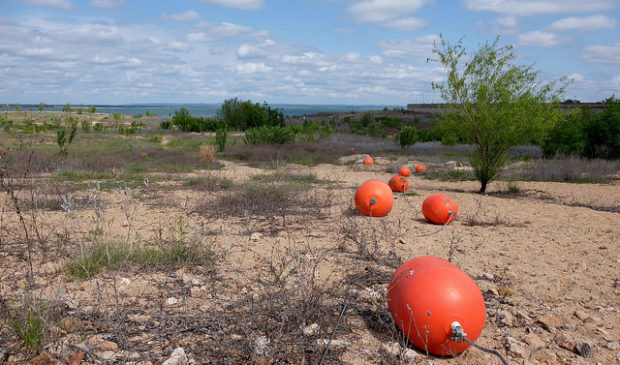Talking climate change, national water experts in Austin look for answers
Friday, May 4, 2018 by
Chad Swiatecki With temperatures creeping toward the triple digits and area rainfall totals falling below historical averages, Austin’s environmental and public planning communities recently got a look at the ways local governments across the country are planning to deal with water management in the face of stronger hurricanes, more extreme droughts and scarcer groundwater resources caused by climate change.
The occasion was the city’s hosting of the Creating Resilient Cities conference on climate change, organized by Austin Water with help from the Office of Sustainability and the Water Utility Climate Alliance, a cooperative of local water and wastewater management bodies and climate change scientists who work together to stay on top of the threats and possible solutions for managing public water resources as global temperatures rise.
The findings and predictions from experts who deal with natural resources every day were stark: Rising temperatures impact both the frequency and severity of weather events and create more demand for drinking water and agriculture use.
“Climate is essential and integral to every feature of future planning: our agriculture, our food, our water, our energy, our economy, our built infrastructure and environment, and even national security,” said Katharine Hayhoe, an atmospheric scientist and professor of political science at Texas Tech University who served as the keynote speaker for the conference. “It all is structured on the expectation of a stable climate. Yet today, the climate is changing. It alters the future conditions we plan for our infrastructure, our resources and even our health.”
During her presentation, Hayhoe shared that Texas has seen 99 weather events causing at least $1 billion in damages since 1980 – the most in the nation – and said warmer ocean water and humid conditions are likely to dramatically add to that total.
“The very strong increases in the Texas area really stands out,” she said. “We’re seeing very strong increases in heavy precipitation on a regional scale directly tied to a warmer climate. Because the warmer it is, the more water evaporates, and so when along comes a storm, there’s more water vapor in the air to dump on us than there was 50 to 100 years ago.
“(Hurricane) Harvey is not an 800-year event anymore. If we continue on our current pathway, Harvey could be a one-in-six-year event by the end of the century.”
While there was talk throughout the day about efforts to cause a gradual decrease in worldwide greenhouse gas emissions in an attempt to slow and reverse warming trends, most of the discussions focused on how cities are dealing with and minimizing the consequences of climate change’s impact on water resources.
“Ninety-nine percent of the time, climate change is not inventing some new problem you’ve never seen before,” Hayhoe said. “It is not bringing a plague of locusts when you have never had locusts before. Ninety-nine percent of the time, climate change is taking something that you already are intimately familiar with and amplifying it or exacerbating it or making it worse. What risks are you already confronted with? Risks like drought. Like flood.”
For the Austin area, the greatest impacts on water from warmer temperatures will be lower inflows to area lakes caused by drier soil, even though local rainfalls have increased.
Daryl Slusher, assistant director of Austin Water, said he and other water resource officials have noticed that the line along the 98th meridian through the Austin area that served as a reliable predictor of which areas would receive more or less than 30 inches of annual rainfall is slowly moving eastward. That means previously wetter parts of the city will become drier, which is likely to impact the Highland Lakes area of Central Texas.
Slusher said he and other city officials have been looking at how other cities are grappling with climate change issues and that a continued push to less water use for ground cover and agriculture will help the Austin area continue its decadelong net decrease in water consumption. And a move toward rainfall harvesting – currently practiced in Philadelphia – and below-ground storage of water from years with surplus rainfall may become part of city policy in the near future.
“Irrigation has already decreased significantly, and we need to continue to drive that down,” he said. “Another important issue is how to relate the messaging on climate change, and I always learn a lot (about that) from Katharine, along with getting to share lots of info with other scientific folks.”
This story has been corrected to clarify that Austin Water organized the event. Photo by Lars Plougmann made available through a Creative Commons license.
The Austin Monitor’s work is made possible by donations from the community. Though our reporting covers donors from time to time, we are careful to keep business and editorial efforts separate while maintaining transparency. A complete list of donors is available here, and our code of ethics is explained here.
You're a community leader
And we’re honored you look to us for serious, in-depth news. You know a strong community needs local and dedicated watchdog reporting. We’re here for you and that won’t change. Now will you take the powerful next step and support our nonprofit news organization?











